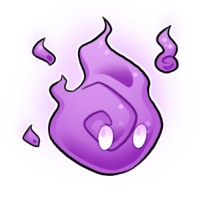 Wisp Magia etherealis
Wisp Magia etherealis
Fairy Glen

APPEARANCE
Sizewise, most wisps range from the size of a golf ball to an exercise ball. Violet faerie wisps are the most abundant type, however, Wisps come in a number of different appearances, some of which seem to be influenced by seasons or even by strange magics. To see the currently available different types of wisps, please visit the Encyclopedia.
HABITAT
Most wisps live in the forests and fields of the Enchanted Vale and the Grand Flora Exchange, although there are reputed to be colonies of them in the parts of the Realm of Tides that border the two faerie nations. They prefer areas with lots of places to hide. Some wisp colonies have grown in places where there's a great deal of magical resources.
BEHAVIORS
Wisps are nocturnal by nature, and generally frightened little creatures. They feed off stray bits of magic, and lack significant tangibility to be prey to other species. However, their feeding habits can make them a nuisance to sophonts like the dextroluma, especially if they feed off power that was intended for use in a magical working. It is possible to tame a 'wild' wisp, as they are not inherently wild or domesticated, and don't really have any drive to do much beyond staying near a source of magic. They make sparkly sounds.
DIET
All wisps eat bits of magic. Pet owners who do not want their magic being consumed will usually buy cheap enchanted items for their wisps to feed from, and simply get a new enchantment once it runs low or runs out.
ROLES
It is unknown what role wisps play ecologically, but scholars believe they regulate magic for the betterment of the ecosystem where they are naturally found.
REPRODUCTION
Unknown.
LIFESPAN
Unusually, wisps seem to be capable of living forever so long as they have access to magic. One wisp in the Enchanted Vale is reputed to be over four thousand years old.
CORRUPTION
Wisps cannot contract necrosis, as they are not particularly physical entities, and lack much of the fungal based genetics that would make them susceptible to it. They may visually mimic some of the effects of necrosis, such as blackened eyes, if taken somewhere like the Blighted Wilds, but such effects only last for the duration of their stay.

